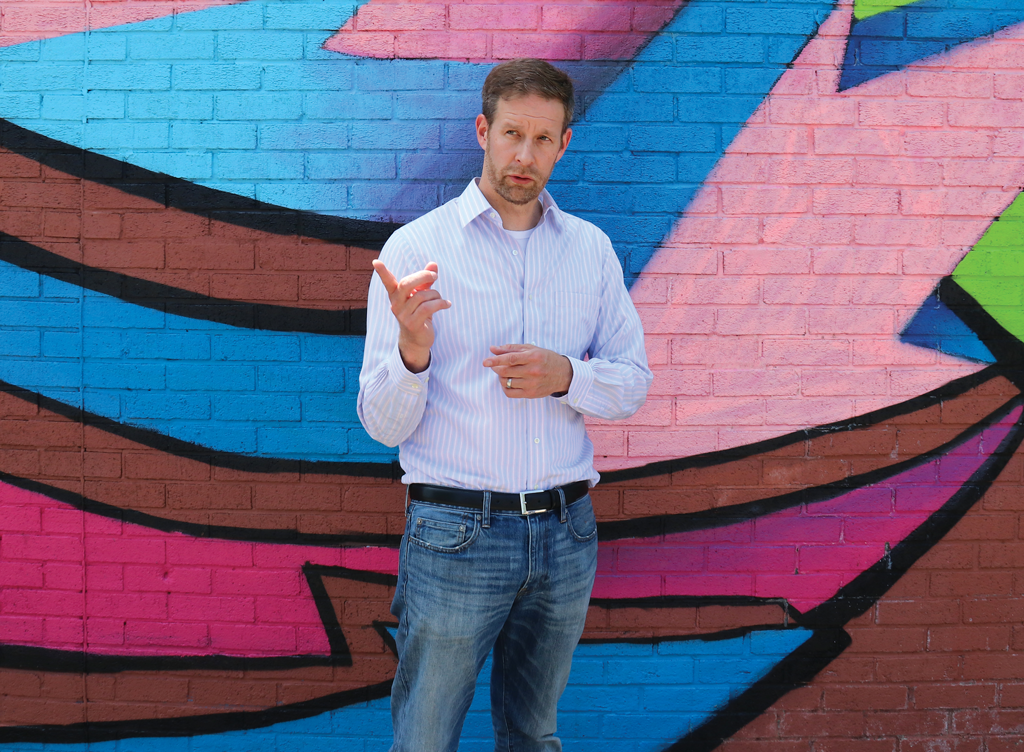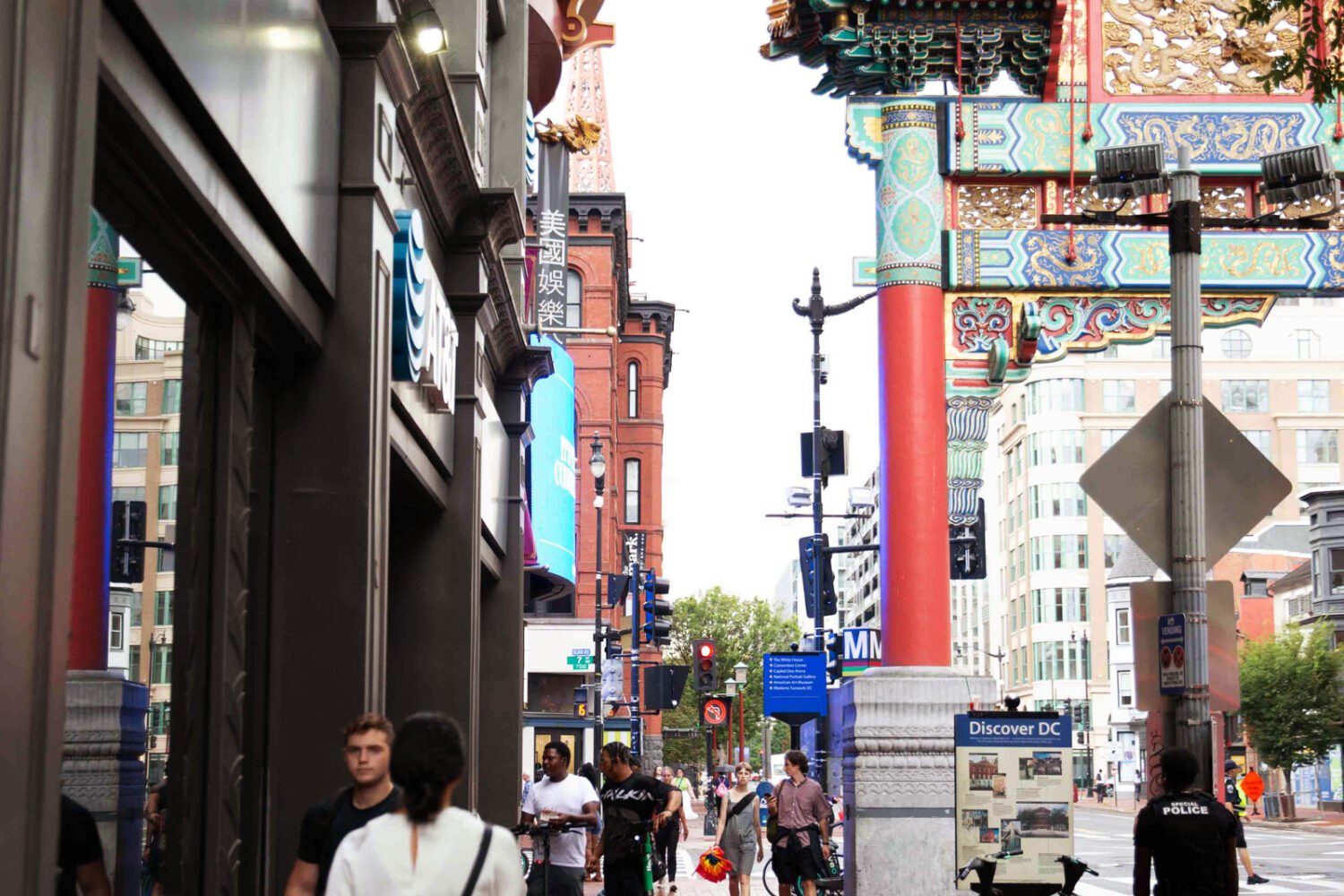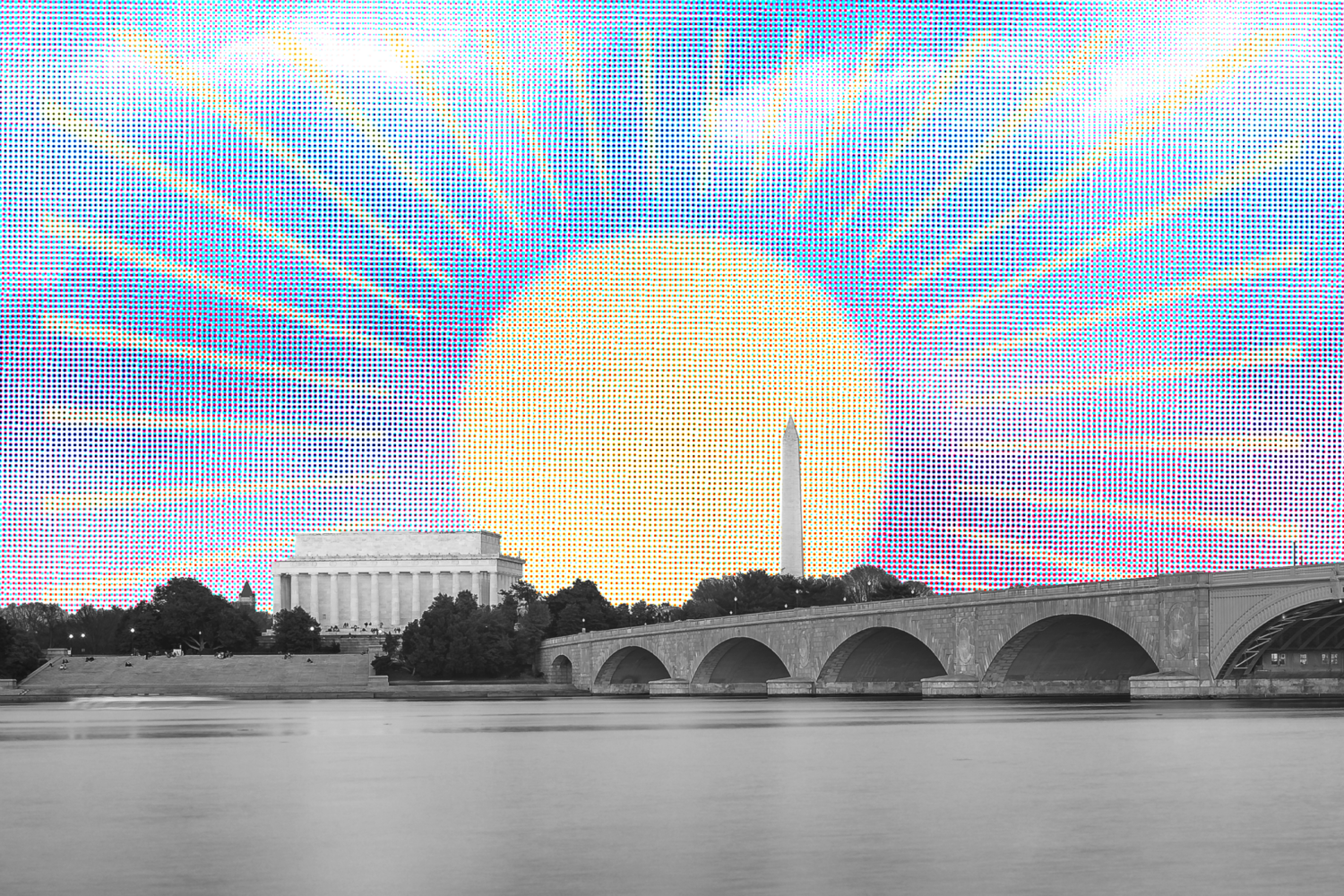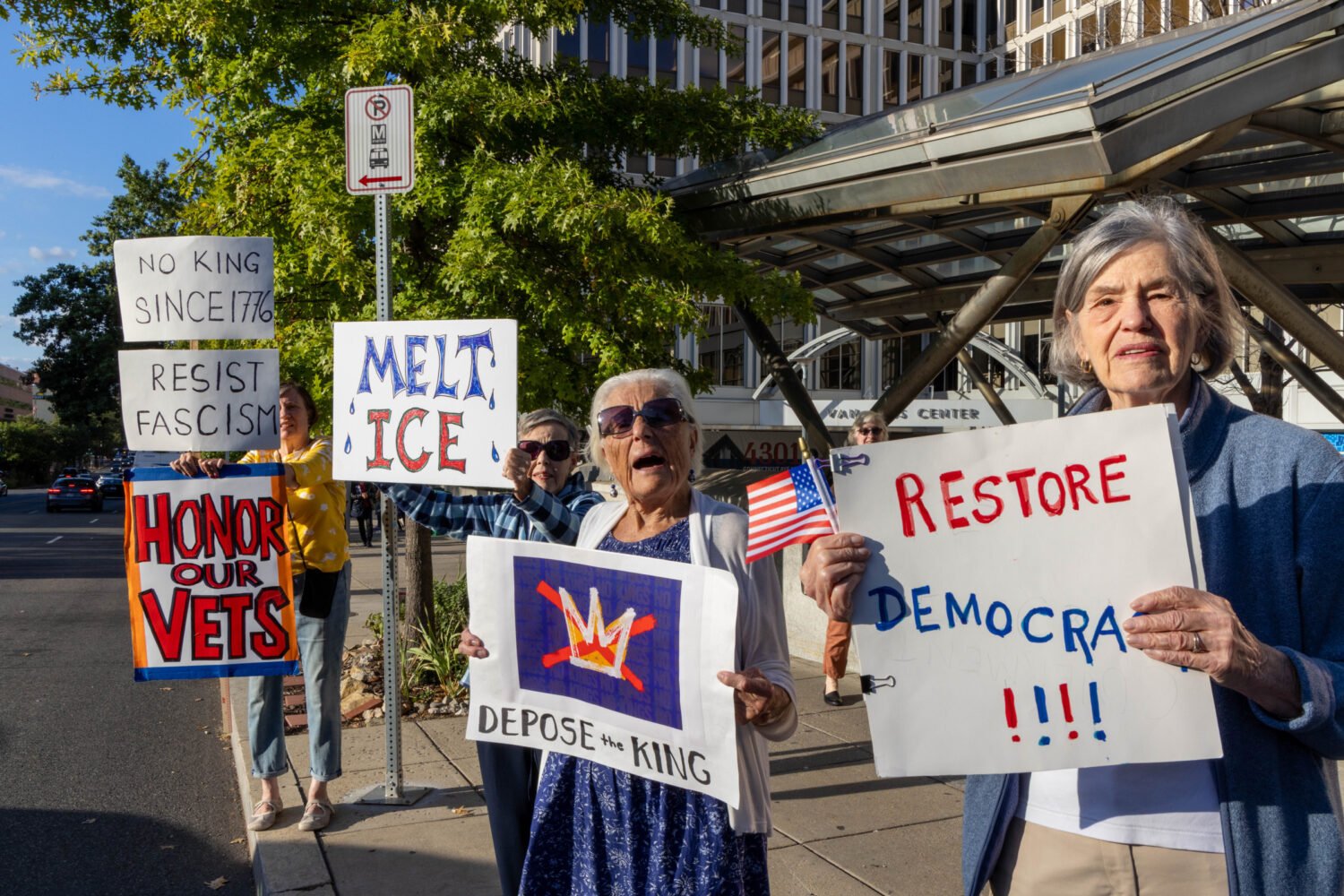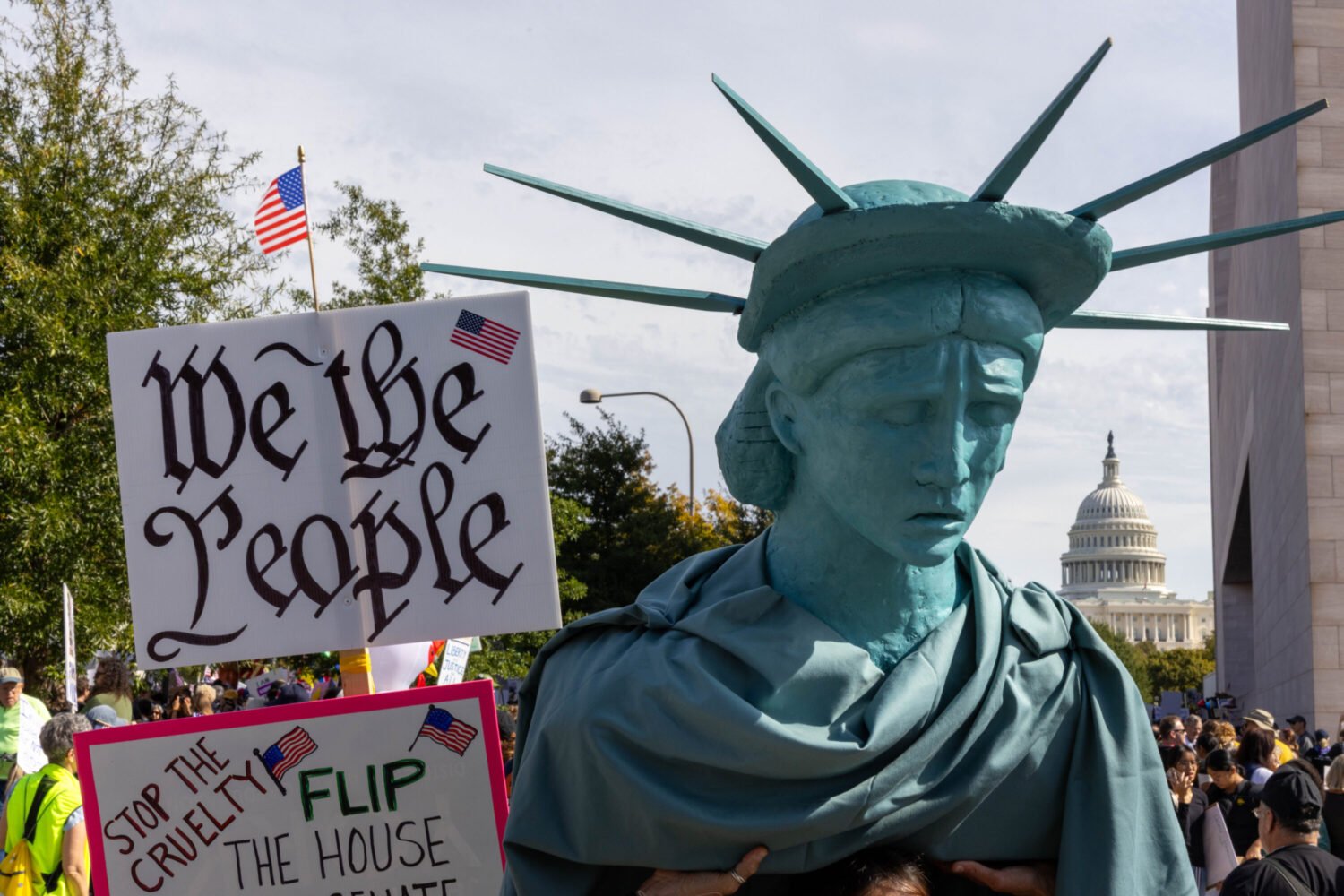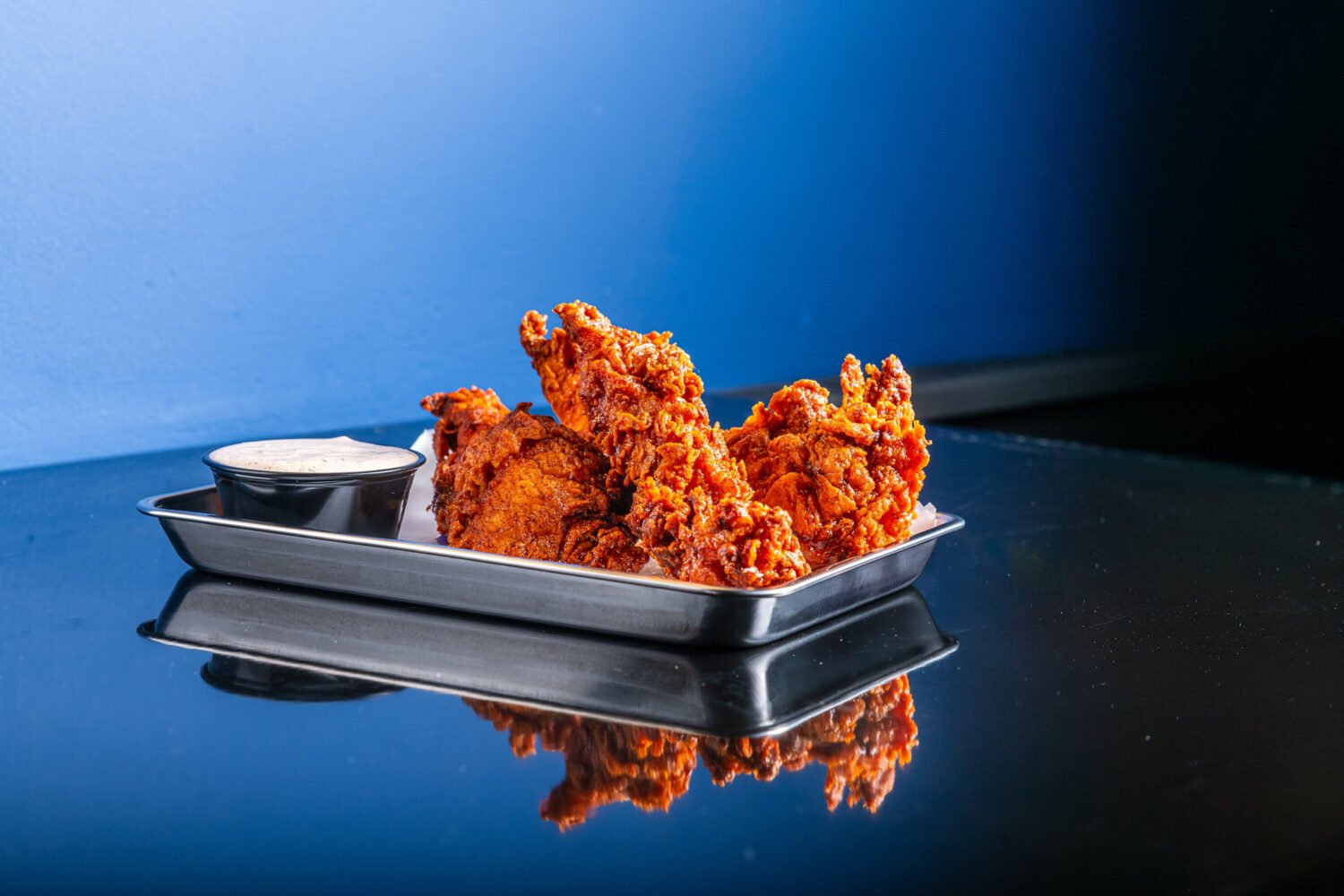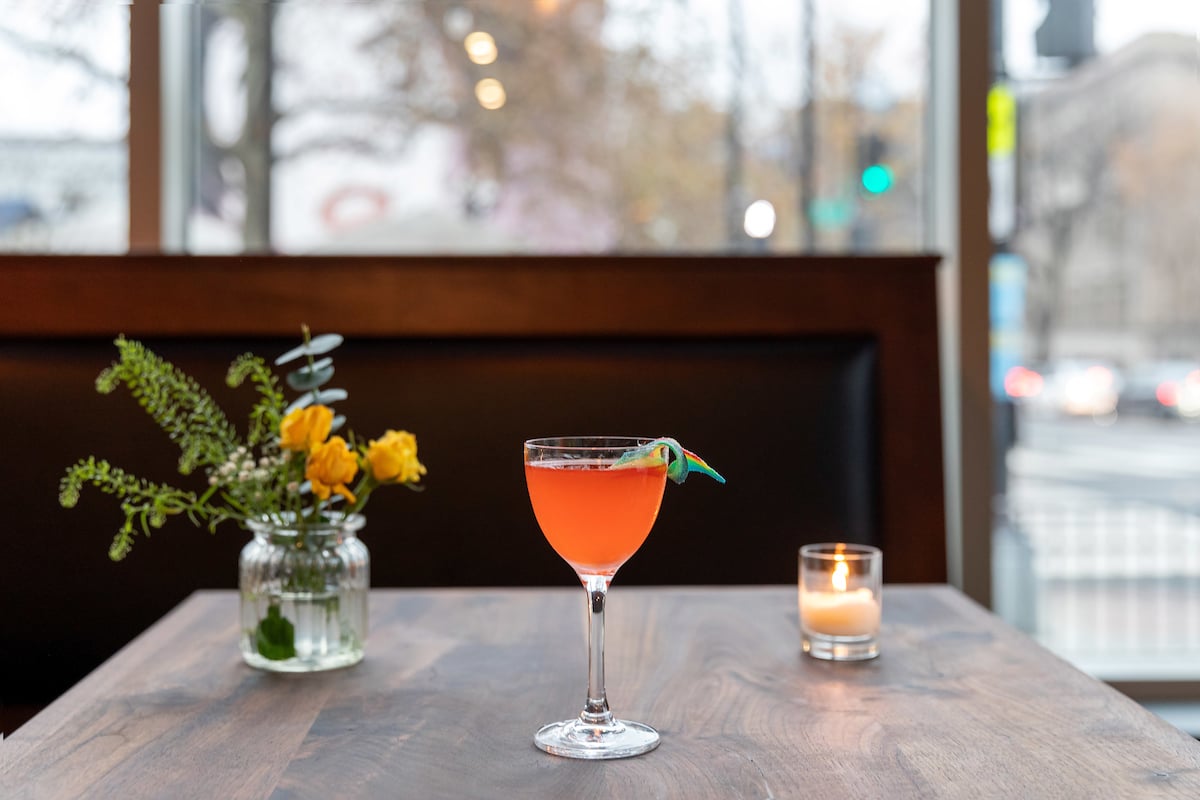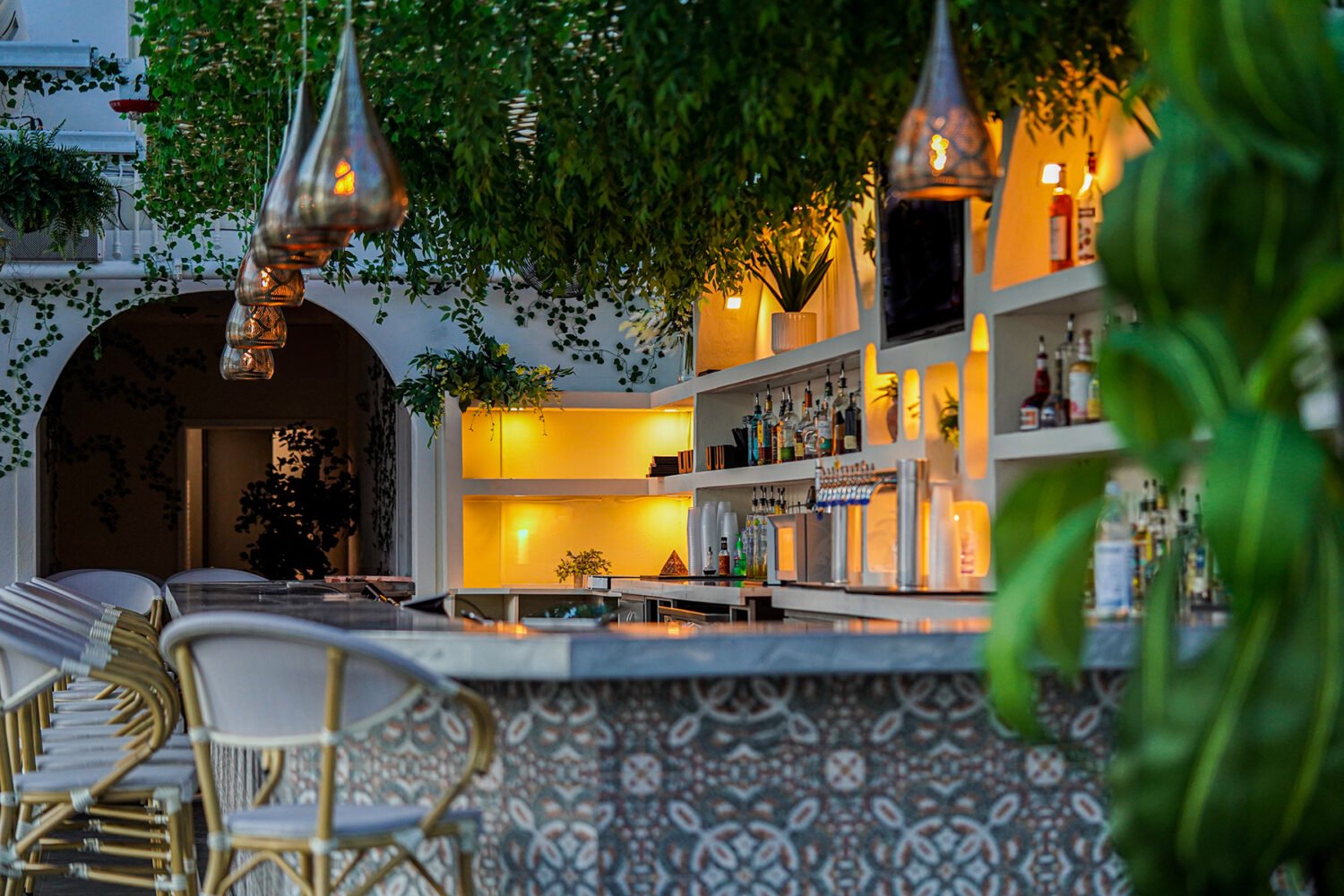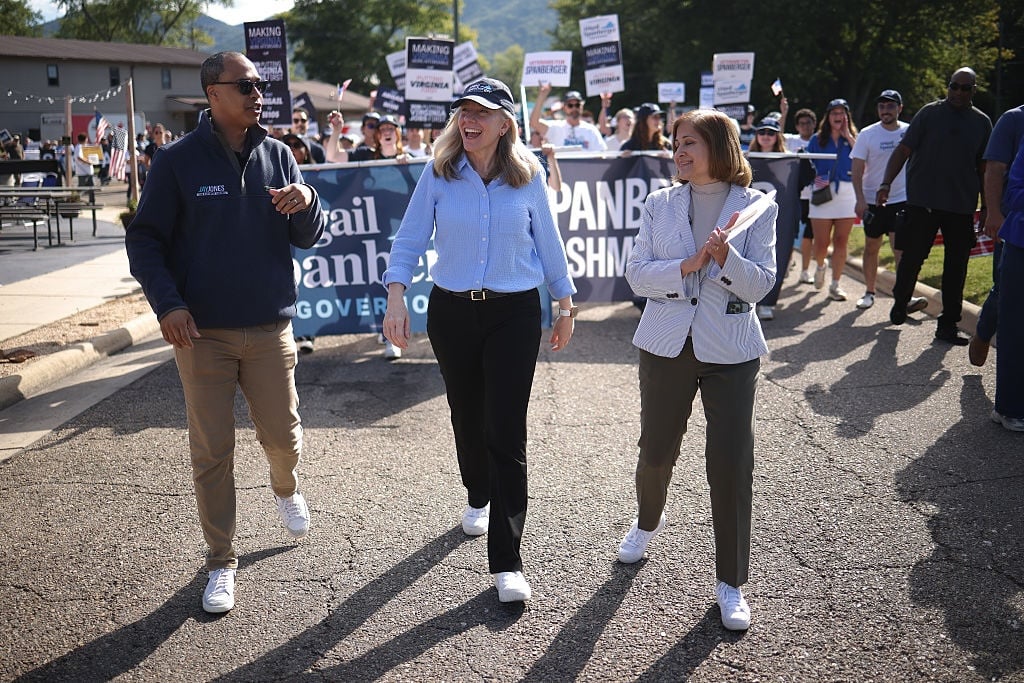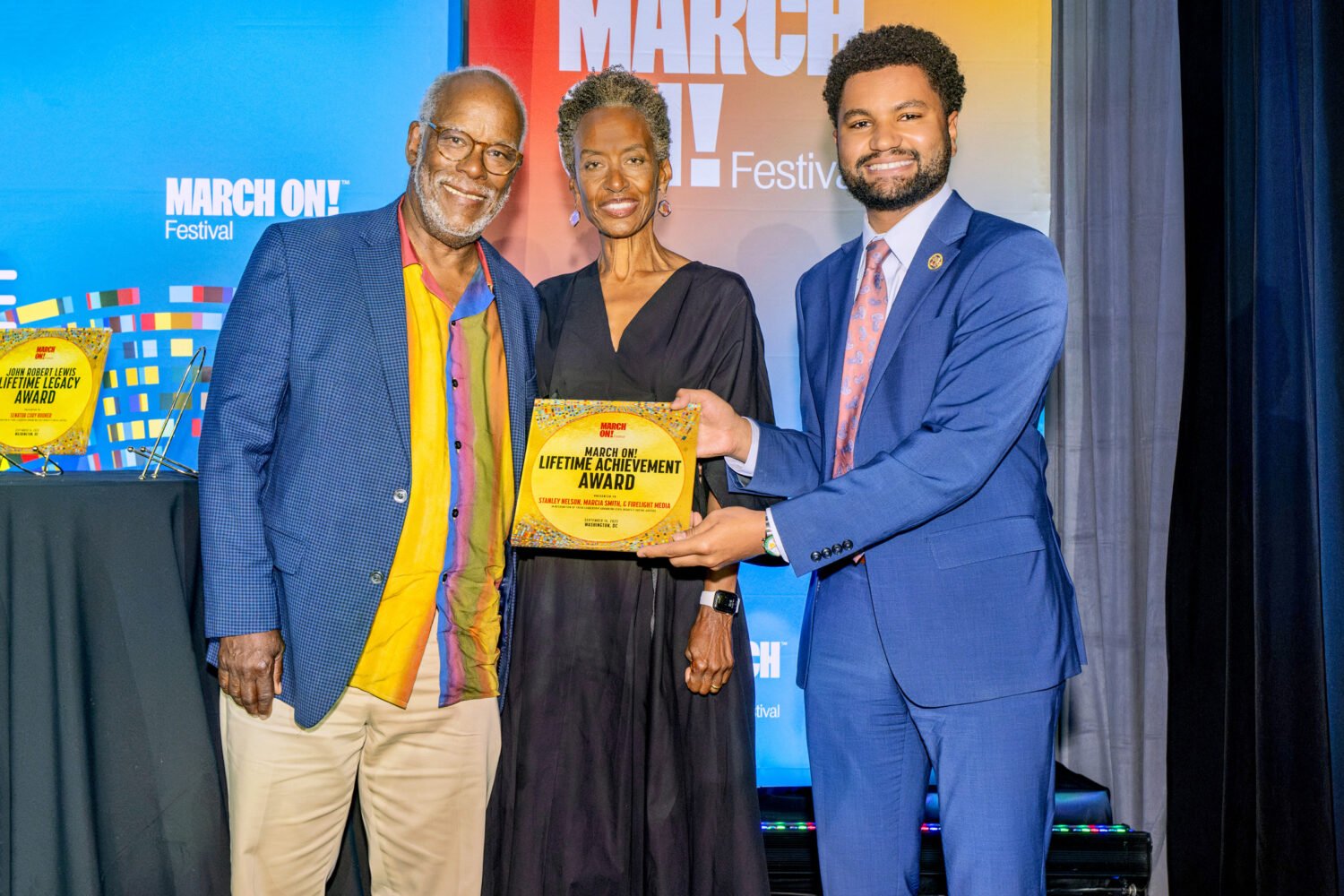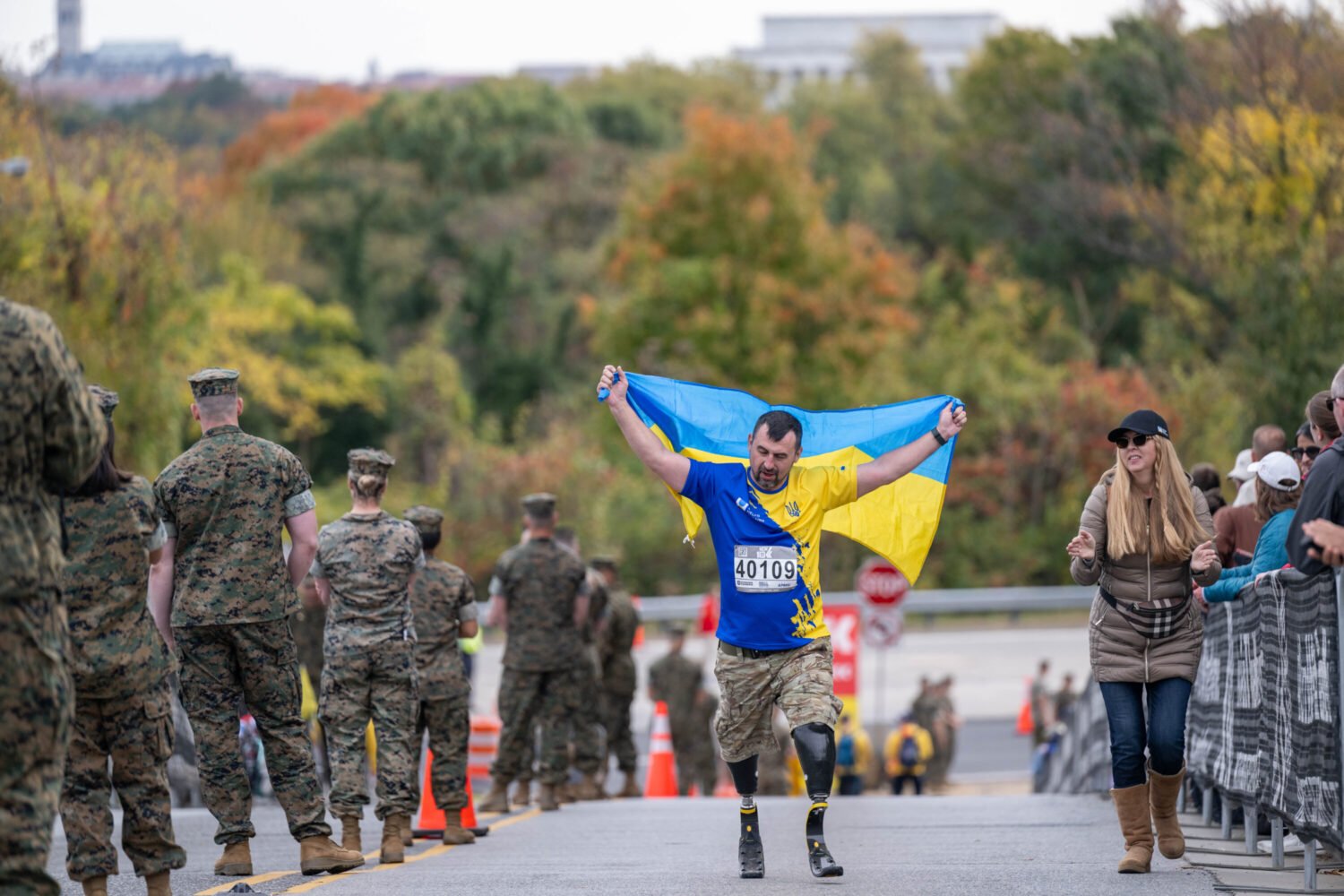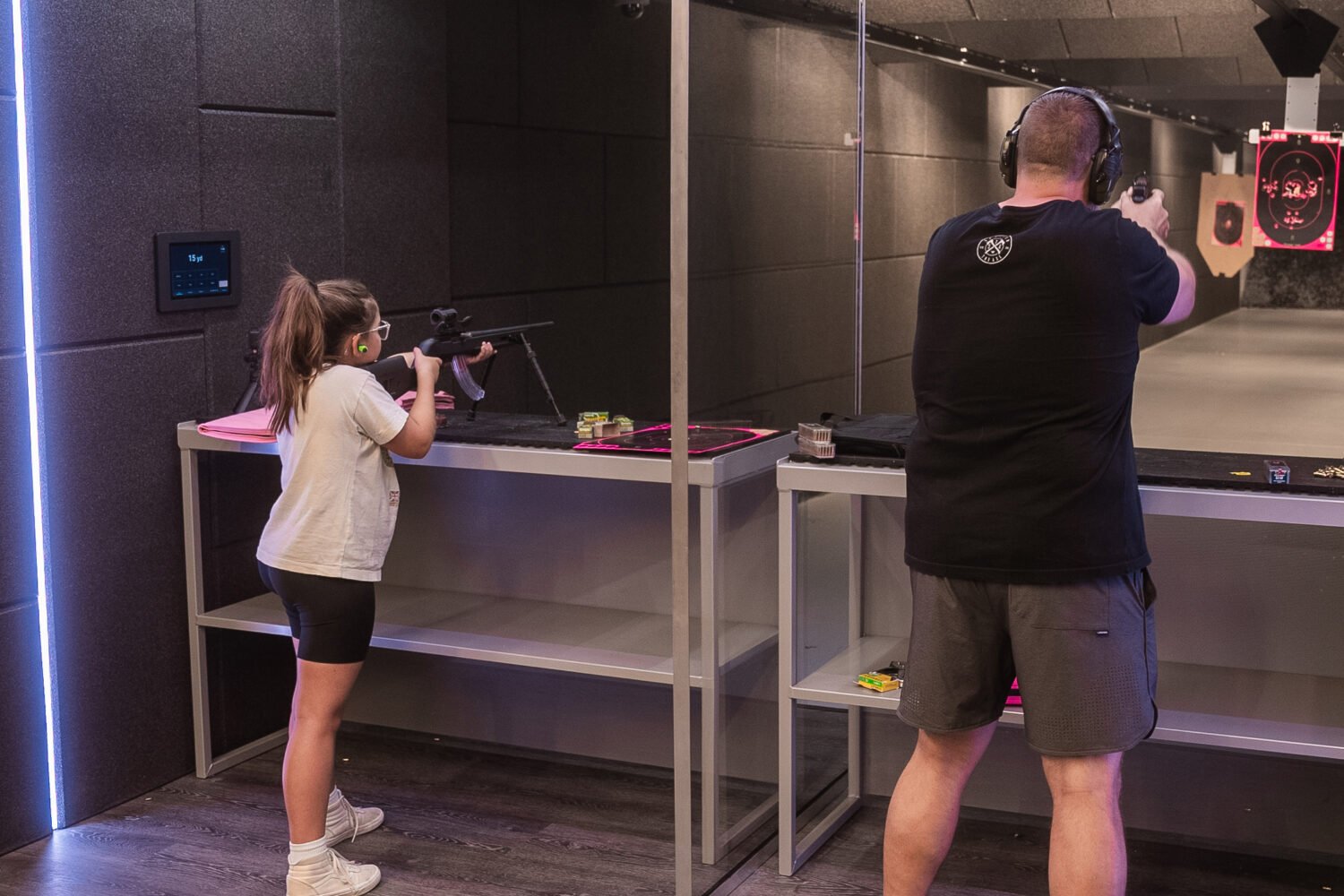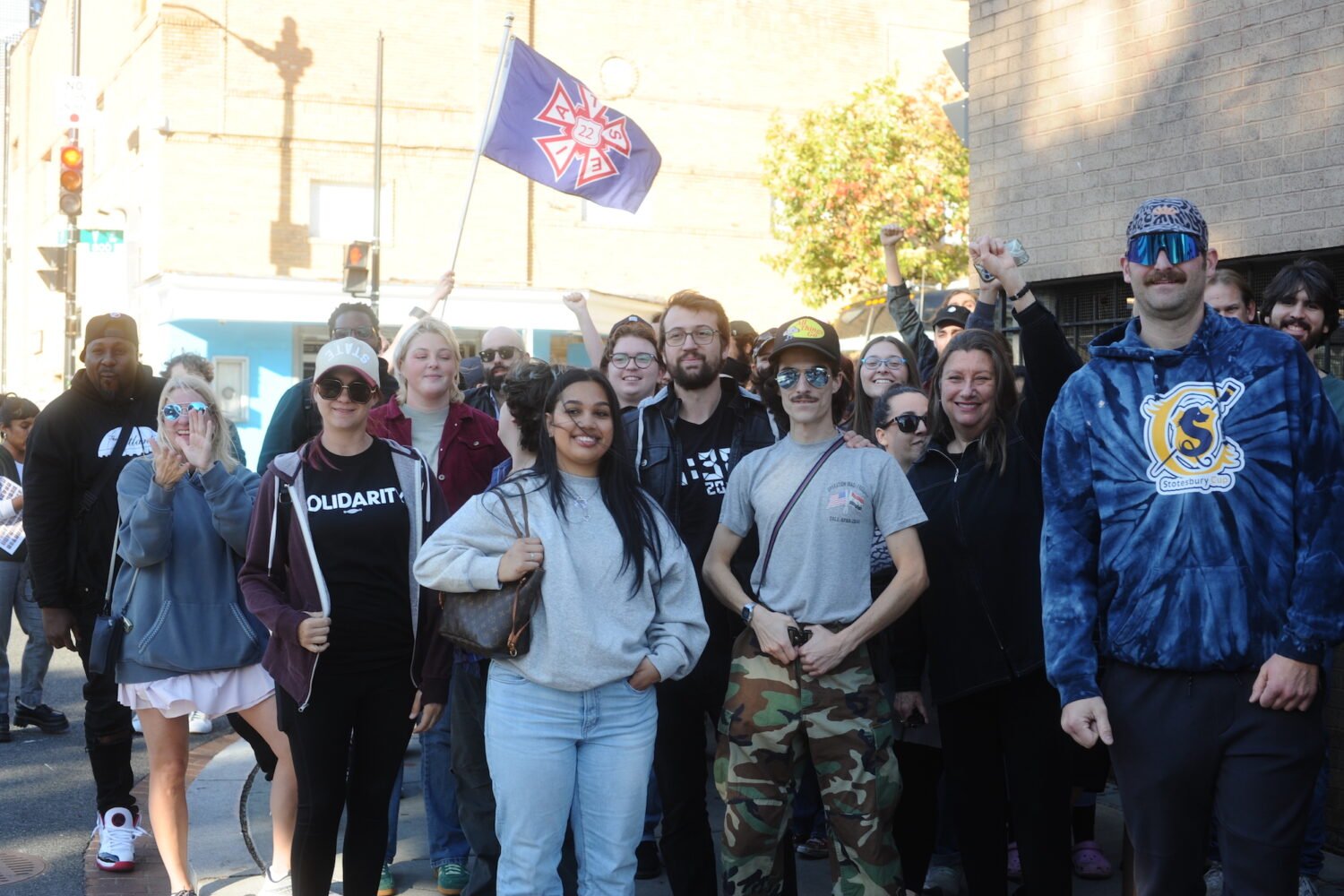The first thing Derek S. Hyra does when we meet at the corner of Seventh and O streets, in the heart of Shaw, is point to a Capital Bikeshare station across the street. Most people would see a row of bikes waiting to be rented. To Hyra, it’s something more sinister—an upscale amenity atop what used to be a gathering spot for older, working-class, black residents.
“It was a whole group of people congregating,” he says. “Now no one’s there. You can see the drastic change and inequality.”
Hyra, a professor at American University, is the author of Race, Class, and Politics in the Cappuccino City, this year’s buzzy treatise on the economic and demographic shifts that have hit Washing-ton in recent years. His basic argument: The waves of younger, often white newcomers who have moved to DC in the 21st century are the frothy milk foam floating on what used to be “Chocolate City.” To chronicle the phenomenon, he immersed himself in Shaw, once the beating heart of the District’s black culture. On a recent morning, I asked him to give me a walking tour to show off the stories hidden behind today’s trendy bars and glittering apartments.
First stop: Compass Coffee, one of the new businesses that, according to Hyra, leave longtime residents feeling exiled in their own home. “You see the inequality across race and class right on the block, and you see it through just sitting in Compass,” he says. “I just feel that most of the people in the coffee shop seem to be middle-, upper-income and can afford a $2,000 computer. When you compare who’s inside the Kennedy Recreation Center, it’s night and day.”
Heading north, we pass a few older people milling around on Seventh Street. The blocks are a mix of old convenience stores and housing that stick out among the new residential buildings, pet-grooming stores, and bars such as Dacha, a beer garden popular with the happy-hour and day-drinking set.
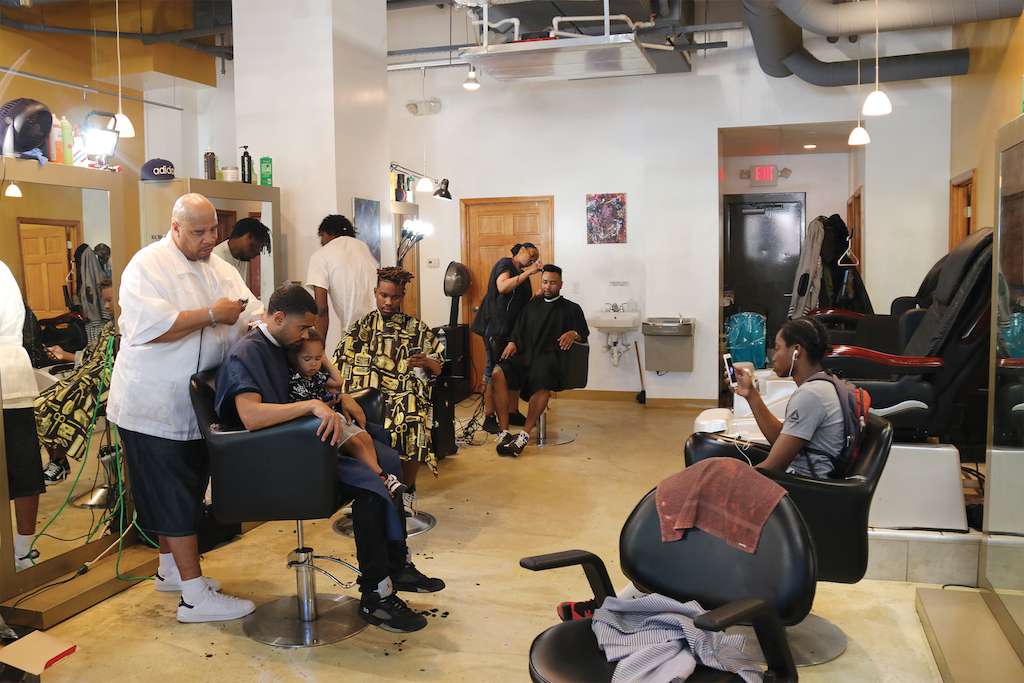
Rather than stop at any of those places, Hyra wants to check in on a beauty salon called Wanda’s on 7th. “Is Wanda around?” Hyra asks the receptionist. Wanda Henderson and her salon play a large role in Hyra’s book. Opened in 1997, the business operated until 2010, when developer Roy “Chip” Ellis—who also revived the historic Howard Theatre around the corner—bought up most of the block and started transforming it into a glassy new project featuring apartments that start at nearly $1,800 a month. Henderson eventually moved her shop up Georgia Avenue.
While we wait for Henderson to emerge, Hyra rehashes how her salon wound up back in its original location, thanks to an agreement with ONE DC, a neighborhood activist group that promotes affordable housing. Hyra isn’t exactly a neutral party when it comes to the organization—he was a volunteer there around the time he started researching his book.
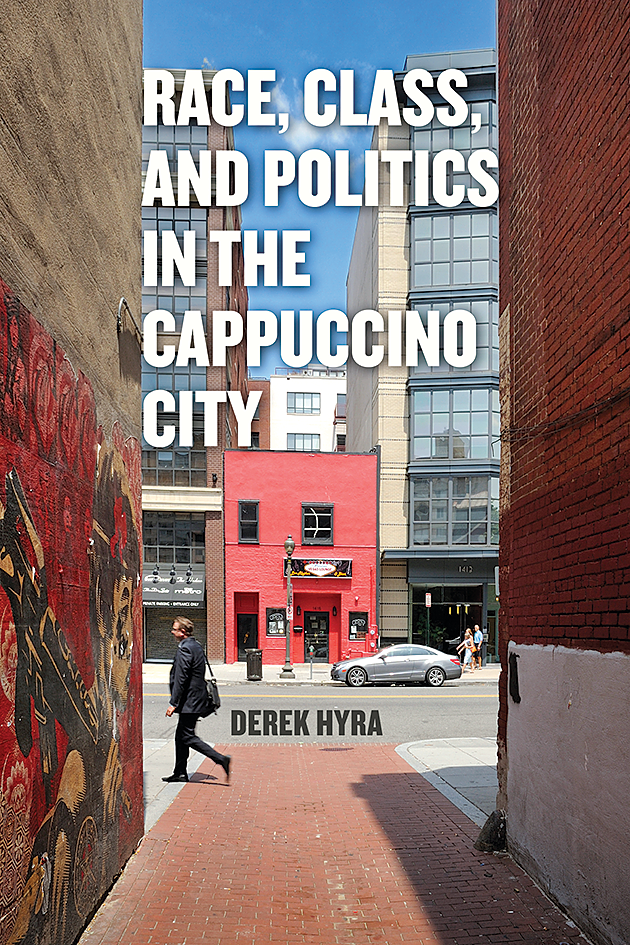
Henderson gives Hyra a big hug when she appears. “The book’s finally out,” he tells her. “Hey, can we get a picture? I’d love to do a reading here.”
Gentrification may be DC’s most fraught local subject, and Hyra has made it something of a professional specialty—he previously studied the phenomenon in Harlem and the South Side of Chicago. The author traces his interest to his days playing high-school basketball. Though he lived in leafy Westchester County, New York, he made a team in Harlem’s Rucker Park, the famed court that nurtured future stars such as Wilt Chamberlain and Kareem Abdul-Jabbar. Being the suburban white guy on a roster filled with players from Harlem and the Bronx made an impact. “My coach asked how many people had gotten over 700 [on the SATs], and I was the only one on the team who had,” Hyra recalls. “It undergirds my whole trajectory.”
His competitive-basketball days might have ended after he graduated from Colgate University. But Hyra, who’s blond, scruffy, and built like a former point guard, still leans on his game. A Falls Church resident, he made inroads with his DC subjects by sinking three-pointers at Kennedy Rec Center, just a block south of Compass Coffee.
Midway through our tour, As we round onto Florida Avenue, we see the gay nightclub Town, and the more cynical part of Hyra’s theory comes into focus. In his book, he recounts attending a fundraiser there in 2010 and overhearing people joking about carjackings, shootings, and robberies.
Hyra believes that one of the reasons so many millennials are moving to previously distressed neighborhoods is because they want to “live The Wire”—as in the acclaimed HBO drama about crime, addiction, poverty, and corruption in Baltimore.
“Except now it’s the gilded ghetto,” he says when we stop in front of the Shay, a hulking development at the corner of Florida and Eighth that features modern, high-rent apartments stacked above trendy retailers including Warby Parker.
Another bit of evidence for Hyra’s sweeping theory comes when we pass a nearby liquor store with bars on the door and, inside, glass separating customers from the clerk: an anecdote relayed to him by the owner of a now-closed Fifth Street liquor store, who told Hyra he once dismissed a young white customer who had come in looking for lottery tickets and 40-ounce bottles of malt liquor for a “hood party.”
I have to wonder—is that really a trend or just one episode of exceptionally poor taste? Couldn’t it be that wealthier newcomers started moving to Shaw because they couldn’t afford Dupont Circle, because a new Metro station made it convenient, and because a series of technocratic DC mayors had helped make the city friendlier to the kinds of businesses those people frequent?
Hyra gets defensive. “It is a real phenomenon,” he says. “It does not apply to all. But University of Virginia students have [those parties], and millennials who went to UVA are moving to DC. They think The Wire is the coolest, hippest show. When you think crime is cool, that is very problematic.”
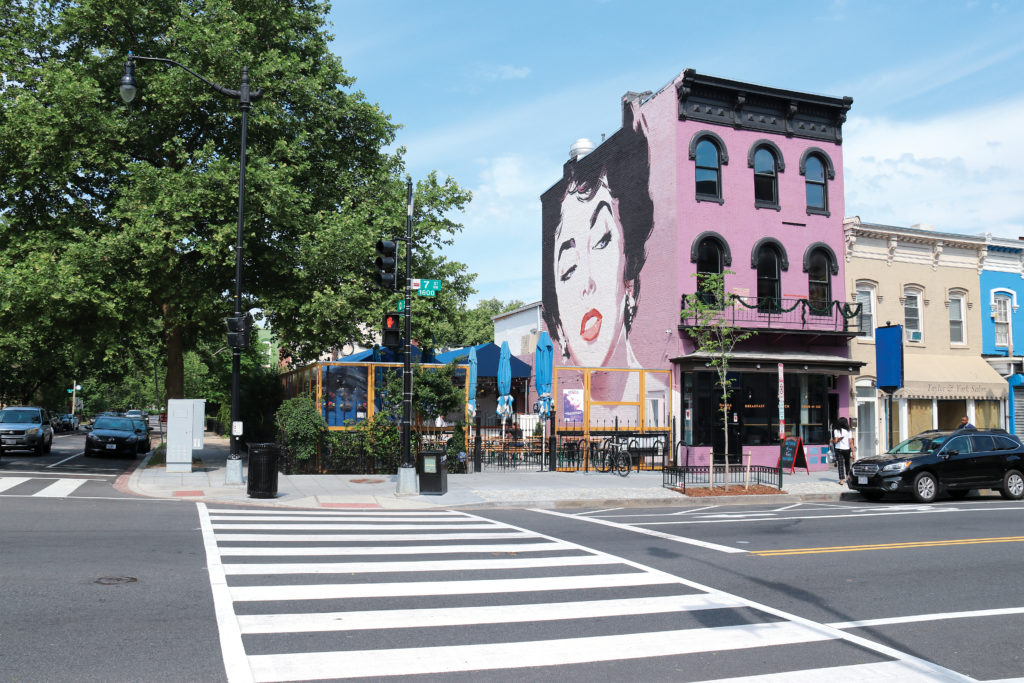
Hyra is on a bit firmer ground when he talks about pricey developers selling Shaw and U Street by tapping into the neighborhood’s history as the so-called Black Broadway. Among the upscale new dwellings to mine that legacy for marketing are the Ellington apartment building and Langston Lofts condominium. “It’s one thing to name a high school in a predominantly black area after a figure in black history,” Hyra says, mentioning Dunbar High School, about a mile from the Shay. “But it’s another thing to market an upper-income luxury development that is being marketed to mainly white millennials.”
Again, it demands a question: How would people feel if developers refused to name things after African-American artists and instead erected buildings named for, say, Billy Joel and Jon Bon Jovi?
As Florida turns into U Street, Hyra starts pointing out the businesses he does like. Lee’s Flower and Card Shop, which opened in 1945. Ben’s Chili Bowl, one of the few places to survive the 1968 riots and easily the busiest scene on an otherwise sleepy early afternoon. Industrial Bank, Washington’s last black-owned financial institution.
We trundle along. Hyra explains that what he’d really like to see is more effort from the city to make its neighborhoods’ evolution less jarring for longtime residents.
“DC has really good affordable-housing policies,” he says. “If it didn’t, Shaw and U Street would be 90 percent white by now. But the city has not done a good job at helping small businesses that are minority-owned stay in the gentrified corridor. Some people say, ‘Hyra, you’re trying to do social engineering.’ I’m not. I’m just trying to alleviate some of the tensions we’ve had in this country.”
Like many people who write about gentrification, Hyra frames it almost as a tragedy. In his case, he pegs it to the fall of officials such as Marion Barry and Frank Smith.
“There was this black political machine that came out of home rule,” he says, skipping over the fact that Barry and Smith became mediocre public servants. He also laments former Shaw advisory neighborhood commissioner Leroy Thorpe’s 2006 ouster by a recently arrived challenger. But Thorpe’s loss came after he gained a reputation for harassing the neighborhood’s gay population. He was toppled by a candidate recruited by Alexander Padro, a gay Latino who had moved to the neighborhood in 1997.
“Alex just wants development everywhere,” Hyra says.
“But he’s been here 20 years,” I say. “He’s not exactly a newcomer.”
“He’s still a newcomer to the longtime residents.”
Hyra’s tour ends at his favorite spot—Busboys and Poets, the restaurant/bookstore/performance space outfitted with colorful murals and paintings that either venerate U Street’s history as a hub for black artists or celebrate progressive activism. Hyra admires the six-location chain and its owner, Andy Shallal, for running an establishment that serves up socially conscious programming in addition to food, coffee, and cocktails. To Hyra, that’s a more “inclusive” business model than something like Compass, which is just selling coffee. “If you spend hours in Compass versus hours in Busboys,” he says, “you’re going to hear different people and different conversations that range the diverse backgrounds that live in Shaw and U Street.”
Hyra asks the host if Shallal is around. He’s not, and we proceed to a table in a room whose clientele—mostly millennial and white—wouldn’t look out of place at Compass Coffee, where we began our tour. Hyra orders a $14 chicken Caesar salad. My steak salad is $1 more. We talk on about the past and future of a neighborhood he’s come to love. Nearly everyone around us has a laptop out.
This article appears in the July 2017 issue of Washingtonian.

